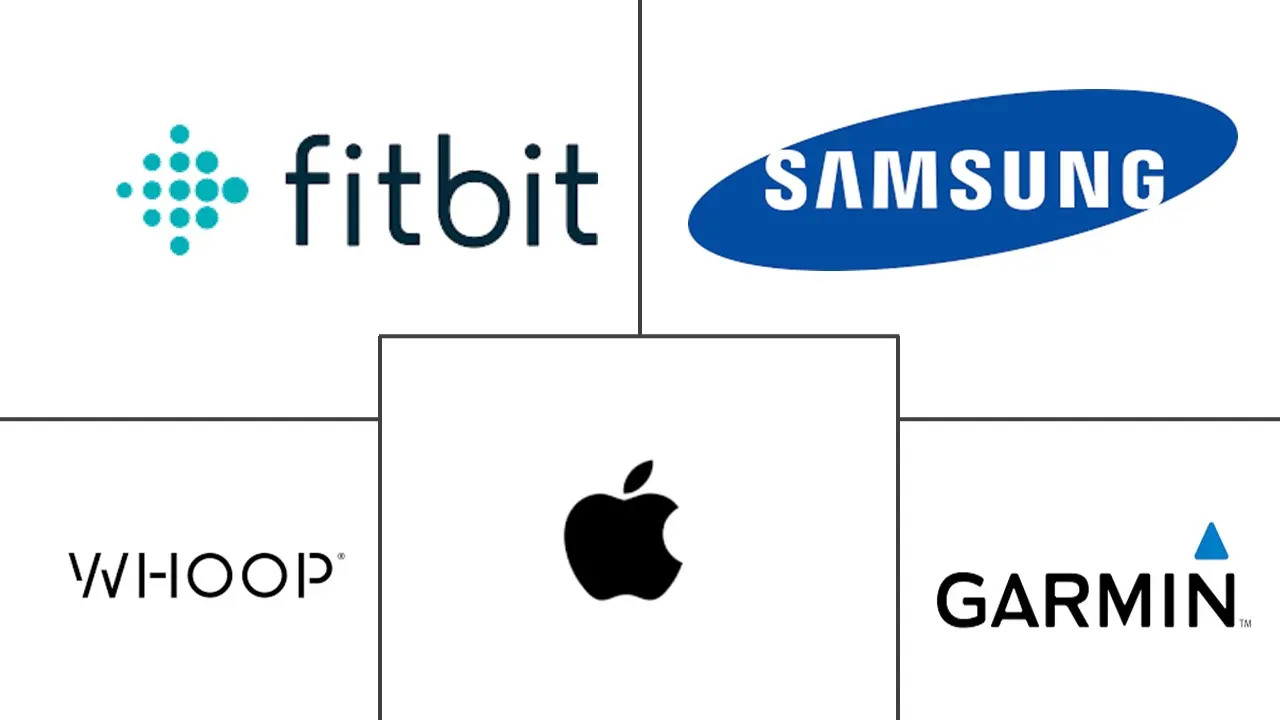Market Size of Stress Tracking Devices Industry

| Study Period | 2019 - 2029 |
| Market Size (2024) | USD 2.9 Billion |
| Market Size (2029) | USD 4.10 Billion |
| CAGR (2024 - 2029) | 7.09 % |
| Fastest Growing Market | Asia Pacific |
| Largest Market | North America |
Major Players*Disclaimer: Major Players sorted in no particular order |
Stress Tracking Devices Market Analysis
The Stress Tracking Devices Market size is estimated at USD 2.9 billion in 2024, and is expected to reach USD 4.10 billion by 2029, growing at a CAGR of 7.09% during the forecast period (2024-2029).
Stress tracking devices enable users to monitor various health parameters, including blood sugar, blood pressure (BP), heart rate, oxygen saturation, cholesterol, and weight. An algorithm processes these factors to generate a stress score. These devices, worn on the skin, help monitor and manage stress levels, detect panic attacks, and identify anxiety. The latest models can even sense cortisol in sweat. Beyond personal use, these devices are instrumental in clinical diagnoses by continuously gathering real-time health data. In essence, stress tracking devices enhance the overall well-being of the user.
The surge in the incidences of stress-related disorders is one of the significant drivers of the stress tracking device market. Increasing urbanization, demanding work environments, and lifestyle changes in modern society contribute to heightened stress levels. These factors have increased conditions such as anxiety, depression, and chronic stress, motivating individuals to find effective methods for managing their mental health.
The rising prevalence of stress-related disorders significantly drives the market for stress tracking devices. In today's urbanized society, demanding work environments and evolving lifestyles increase stress levels. This heightened stress has led to a surge in anxiety, depression, and chronic stress, prompting individuals to seek effective mental health management solutions. As per the World Health Organization in 2023, anxiety disorders topped the list of global mental health issues, affecting 4% of the population in 2022.
In addition, rising government initiatives to promote awareness regarding mental health are fueling the market growth. Governments are increasingly acknowledging mental health as a crucial aspect of overall well-being, leading to the implementation of policies designed to enhance awareness, reduce stigma, and improve mental health services. For example, in October 2022, the Government of India introduced the “National Tele Mental Health Programme,” aimed at expanding access to high-quality mental health counseling and care services across the country. This initiative reflects a strategic move to address mental health challenges and enhance service delivery on a national scale.
The rising use of mobile apps for real-time stress monitoring is a significant driver for the stress tracking device market. These apps provide insights into users' physical and mental health, tracking metrics like heart rate variability, sleep patterns, and daily activities. Given that there were around 6.84 billion smartphone users worldwide in 2022, the demand for such stress tracking technologies is poised for substantial growth.
However, privacy and data security concerns present challenges to the market's growth trajectory. Additionally, seamlessly integrating these devices into current healthcare frameworks and ensuring consistent user engagement are pivotal challenges for wider acceptance.


